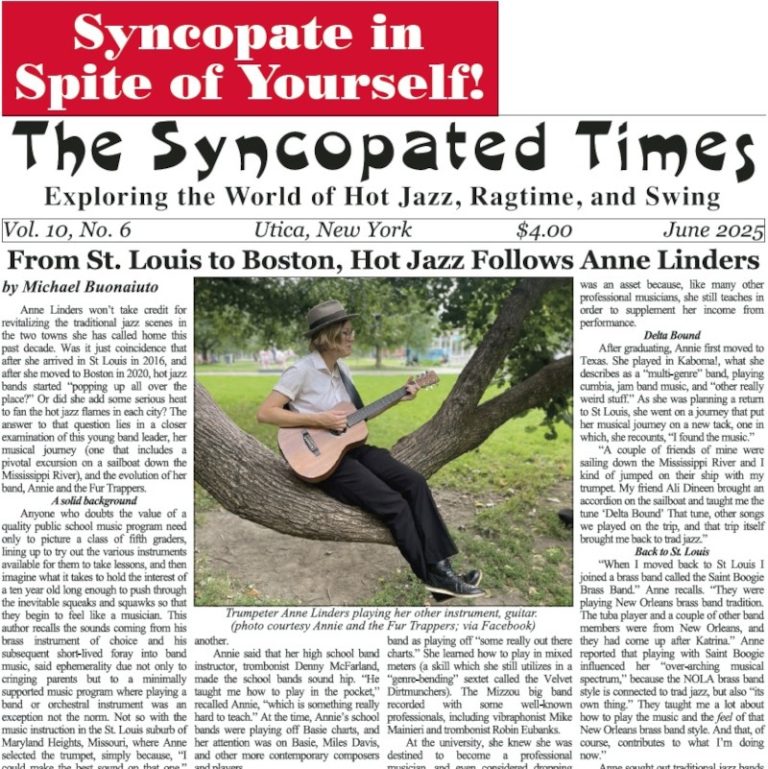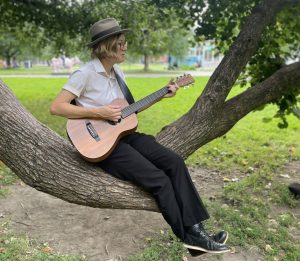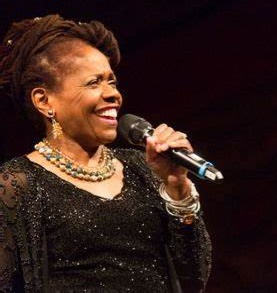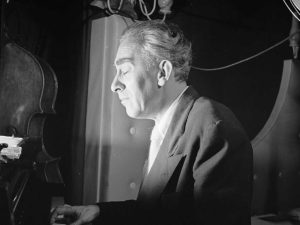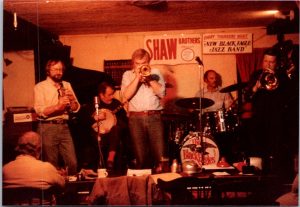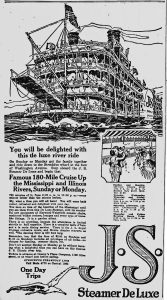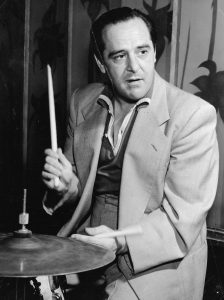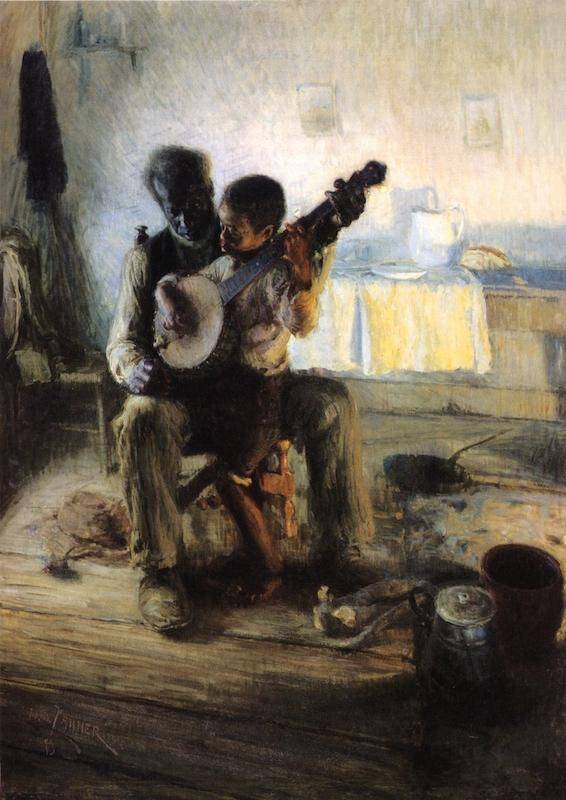
During the original heyday of ragtime music in the very late 1800s and the very early 1900s, banjos were in common use in minstrel shows and as the accompaniment for individual folksingers. At that time just about all American banjos had five strings with the drone fifth string attached to an outrigger tuning peg set at the fifth fret, just as one sees today used in folk music and bluegrass music.
The ragtime orchestras often had guitars as part of the chord background and violins as part of the melodic lead. As the ragtime orchestras evolved into jazz bands in New Orleans and other places, horns became the lead instruments and were too loud for the guitars to be heard.
One of my traditional jazz musician friends has a sign in his jamming room that says, “If you can’t hear the piano, you’re playing too loud.” Well, banjos sure are louder than guitars, but the drone fifth string gets in the way of the many chords used in ragtime and traditional jazz. So the guitar players played six string banjos tuned and played like guitars. Some of the earliest and best known of the trad players, Johnny St. Cyr and Clancy Hayes among them, played six string banjos that they made themselves or had made for them.
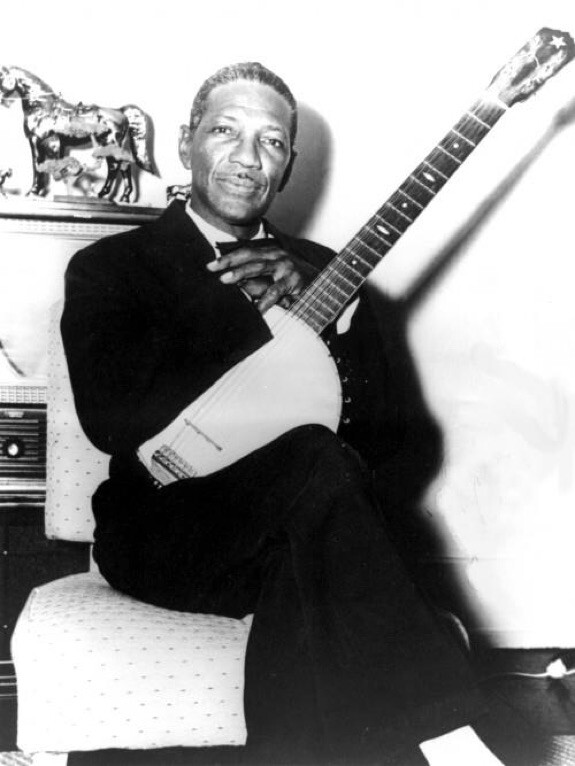
But there’s a problem. Each note played on a banjo has overtones that don’t appear when a guitar is played. And the more strings that are played at one time, the more those overtones interfere with each other. So a six-string banjo has to be played very carefully and not just strummed as can be done with a guitar. And if you can’t bang on it, how will you be heard against the horns? The answer was the four-string banjo, but they were not yet very common.
If you look at photos of the earliest trad bands, you see some six-string banjos and some five-string banjos, presumably with the fifth string removed. A five string banjo without the fifth string and fifth peg is called a plectrum banjo. Plectrum banjos became the standard stringed instrument in trad jazz bands along with tenor banjos, which are tuned just like violas and have an even higher and sharper tone than do plectrum banjos.
Meanwhile, ragtime music had taken over Tin Pan Alley, and its influence on popular music continues to this day. In the twenties and thirties that influence was just about total. Think “Play a Simple Melody,” 1913, revived in 1950. Think “Has Anybody Seen My Gal?” (aka “Five Foot Two”), 1925. Think “I’m Looking Over A Four Leaf Clover,” 1927, revived in 1948. Think “When I’m Sixty-Four,” 1967. This last tune was obviously not composed in Tin Pan Alley, but the influence is clear.
The four string banjo was the common accompaniment for those tunes and remained so in the pizza parlors of the fifties and later and in other venues that did and still do feature ragtime-influenced old pop songs. There are still banjo clubs in just about every city where ten or twenty or more folks get together to play those tunes on plectrum and tenor banjos. It’s not jazz any more than those pop songs were when they were written, but the banjo players sure do enjoy themselves.
Of course, as trad jazz evolved into swing and amplification became available, guitars replaced banjos in those bands, and guitar players became soloists as had the banjo players in some of the trad bands, except for holdouts like the great Freddie Green. But banjos are usually still the chord instruments in trad bands, and, despite the stereotype of the trumpet player as the leader of a trad band, as often as not the banjo player is the leader, as in my own Spirit of ’29—because who would hire a banjo player? As for me, although I have been able to acquire good quality four string, five string, and six string banjos over the years, and play one or the other as required, I still prefer the sound of a good acoustic guitar.
Related: The Banjo: America’s African Instrument, by Laurent DuBois, The Great Banjo Summit & Other Things with Strings




